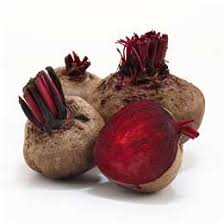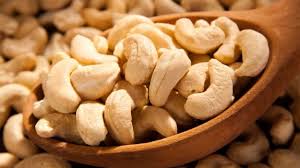And also tomayto, tomahto.
Both are expressions meaning “unimportant difference”. Something that means “it doesn’t matter how we say it, a potato is a potato”. Additional names include: spud, tater, and Solanum tuberosum (indicating the part of the plant and it’s family). There are close to 4,000 varieties of potato, which are generally categorized into a few main groups based on common characteristics, such as red potatoes, white potatoes, yellow potatoes (also called Yukon potatoes) and purple potatoes. These varieties are available at our store.
The potato is a member of the Solanaceae family, such are the eggplant and the tomato. As we all know, the potato grows underground, and is actually an underground thickened stem (called stem tuber) that we like to use for food. In our country, it serves as a nice addition as mashed potatoes, potato latkes or gnocchi, and we have no national holiday symbolized by potatoes (Hanukkah latkes can be made out of zucchini or anything else, as long as it is deep-fried in oil).
But there are countries and population groups for whom potatoes are closely linked to nutritional security, or lack of it. In Israel, for example, the average amount consumed per capita per year is 45 kilograms, compared with 70-120 kilograms in Europe. Potatoes are the fourth largest agricultural crop in the world.
One of the most overwhelming examples occurred in Ireland in the 19th century, when damage to the potato crop between 1845 and 1849 caused global phenomena of emigration, flight, and famine (about one million people died of starvation in those years). The potato famine also served as a catalyst for the various political intrigues that were going on during those days. It is hard for me to think of a local agricultural crop that if damaged today would create such waves of recoil, leaving the event so strongly linked in the people’s folklore and history.
Of course, this is not a problem in a place and time of globalization such as export and import, and the neighborhood grocer is certainly not entirely made up of local produce. Could you imagine Israel as a country that relies mainly on a single agricultural crop for the food supply of all its residents?
The origin of the organic potatoes is probably in the Andes, where, during its cultivation process, the gene that causes the potato to contain quantities of the solenine toxin has disappeared – and then it spread to other Native American populations. In the 16th century the potato was brought to England (there is more than one version regarding who introduced the chips to the English people), where the local farmers were happy to find that it was more convenient to grow than oats or wheat. This discovery did not cause the English to abandon their beloved quaker, but they certainly found time and a place to grow it.
By the middle of the 17th century, there were substantial growing areas of potato in Ireland (the same Ireland that will starve when the potato crop is damaged). How did the potato delight the English? By energy per area. I’ll explain: If we compare the amount of starch, the sugar that breaks down in the digestive system into energy units, which can be obtained from an acre of potatoes with that from an acre of oatmeal, the potato wins.
The potato prefers a cold climate – so here it grows in winter and spring, whereas in countries with a colder climate (like Europe) it grows in the summer. Potato crops depend not only on temperature, but also on the amount of daylight hours the plant is exposed during the day. Therefore, in different places and in different seasons, different varieties of potatoes are grown. The wrong choice, for example, planting potatoes in a hot season with lots of light hours a day, can yield a happy and tall plant (almost a meter), but with a tiny tuber with almost nothing to eat… Irrigation is also crucial in growing potatoes, especially organic potatoes: too little water and the plant will not thrive, too much water will nurture the parasites and diseases that are characteristic of the specie.
What do you do with all these potatoes? The culinary intention depends on the amount of dry content in the organic potato, and those with higher percentages are more suitable for frying and baking than for cooking. The dark purple potato, for example, the Vitelotte variety, is suitable for frying and baking, while the "Ratte" is better for soft and fluffy mashed potatoes.
To health!
Yours,
Maggie's Garden team
Forecast:
Organic vegetable baskets (draft only):
Cucumbers
Tomatoes
Lettuce
Potatoes
Parsley
Eggplant
Beets
Pumpkin
Swiss chard
The LARGE organic vegetable baskets also:
Cabbage
Cilantro
Zucchinis
Organic fruit baskets:
Half a watermelon
Sweetie
Bananas
The LARGE organic fruit baskets also:
Melon
Grapefruit













